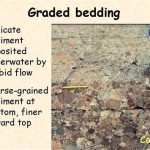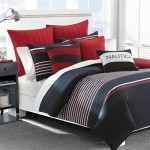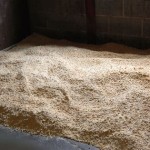Bedding and Comforters: A Comprehensive Guide to Comfort and Style
Bedding and comforters are essential elements of a comfortable and inviting bedroom. They play a crucial role in regulating body temperature, providing support for a restful sleep, and adding a touch of personal style to your sleeping space. With a wide variety of options available, choosing the right bedding and comforter can be overwhelming. This comprehensive guide will help you understand the key aspects to consider when selecting and caring for your bedding and comforters.
Choosing the Right Bedding
Bedding includes items that come in direct contact with your skin during sleep, such as sheets, pillowcases, and blankets. When selecting bedding, consider the following factors:
1. Material:
The material of your bedding significantly impacts its comfort, breathability, and durability. Common materials include cotton, linen, silk, and flannel. Cotton is a popular choice for its softness, breathability, and easy care. Linen is known for its durability and cooling properties, while silk is luxurious and smooth. Flannel is a warm and cozy option for colder climates.
2. Thread Count:
Thread count refers to the number of threads per square inch in a piece of fabric. A higher thread count generally indicates a softer, more durable fabric. However, it is essential to consider the type of material and construction as well. Some materials, like linen, naturally have a lower thread count but are still highly durable and comfortable.
3. Size:
Choose bedding that fits your mattress and pillows properly. Measure your mattress before purchasing sheets and pillowcases to ensure a snug fit. Comforters should also be large enough to cover the entire mattress and hang down on both sides.
4. Color and Pattern:
Bedding can significantly impact the overall look and feel of your bedroom. Consider your personal style and the color scheme of your room when choosing bedding. Choose neutral colors for a calming and serene atmosphere or bolder patterns for a more vibrant and energetic look.
Choosing the Right Comforter
Comforters are thicker, warmer blankets that provide extra insulation and comfort during sleep. When selecting a comforter, consider the following factors:
1. Fill Material:
Comforters are typically filled with down, feathers, synthetic materials, or a combination thereof. Down and feather comforters are known for their warmth, lightness, and breathability. They are a good choice for people who live in cold climates or prefer a warm and cozy bedding. Synthetic comforters are a more affordable option and are often hypoallergenic, making them suitable for people with allergies. They are also easier to care for and maintain.
2. Warmth Level:
Comforters come in various warmth levels, from lightweight to heavyweight. The warmth level you need depends on your personal preference and the climate in which you live. A lightweight comforter is ideal for warmer climates or people who tend to sleep hot. A heavyweight comforter is a good choice for colder climates or people who prefer a warmer bedding.
3. Size:
Choose a comforter that is large enough to cover the entire mattress and hang down on both sides. Comforters typically come in standard sizes, such as twin, full, queen, and king. Make sure to measure your mattress before purchasing a comforter to ensure a proper fit.
4. Design and Style:
Comforters are available in a wide range of colors, patterns, and designs. Choose a comforter that complements the style of your bedroom and your personal taste. You can also mix and match different bedding sets to create a unique and personalized look.
Care and Maintenance
Proper care and maintenance are essential to prolong the lifespan of your bedding and comforters. Here are some tips to keep your bedding fresh and clean:
1. Regular Washing:
Wash your sheets and pillowcases weekly or biweekly in warm water with a mild detergent. Comforters should be washed according to the manufacturer's instructions, which may vary depending on the fill material and construction.
2. Drying:
Dry your bedding on low heat or air dry to prevent fading and shrinkage. Do not over-dry, as this can damage the fabric.
3. Fluffing:
Fluff your comforter regularly to maintain its loft and prevent clumping. This also helps to distribute the fill evenly.
4. Storage:
When not in use, store your bedding and comforters in a cool, dry place. Avoid storing them in damp or humid areas, as this can lead to mold and mildew growth.
Conclusion
Choosing the right bedding and comforters can significantly improve the quality of your sleep and create a cozy and inviting bedroom. Consider the factors discussed in this guide to make an informed decision when selecting and caring for your bedding and comforters. With proper care and maintenance, your bedding and comforters will provide you with years of comfort and enjoyment.

Soft Blend Plaid Bedding Bundle In 2024 Blue Sets

Comforters Duvet Covers Quilts Nordstrom

Comforters Quilts Nordstrom

Bedding Sets Bed Sheets Pillowcases At Home

7 Piece Red Black Flocked Comforter Set Queen Sets And Bedding Comforters

The 6 Best Comforters Of 2024 Reviews By Wirecutter

Duvet Covers Vs Comforters Key Differences Benefits Drawbacks Saatva

Quilt Vs Comforter What Is The Difference Manchester Collection

Comforters Quilts Nordstrom

Duvet Vs Comforter What S The Difference Slumber Yard
Related Posts








